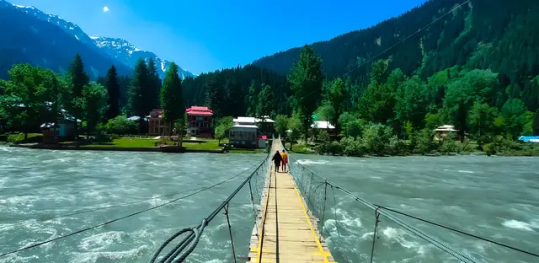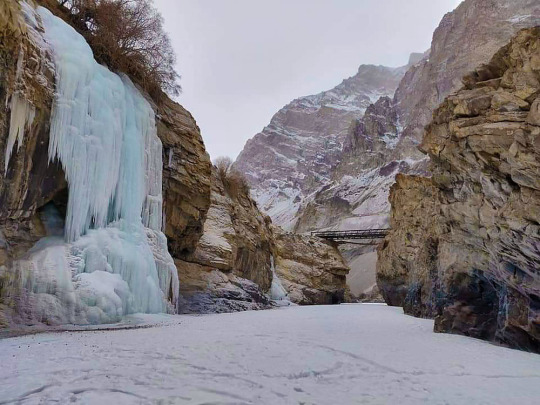Don't wanna be here? Send us removal request.
Text
Kashmir in March: A Spring Paradise Awaits
Kashmir, often referred to as "Paradise on Earth," takes on a unique charm in March. The melting snow, blooming flowers, and pleasant weather make it one of the best times to explore this northern wonderland. Whether you are a nature enthusiast, an adventure seeker, or someone looking for a serene getaway, Kashmir in March has something to offer for everyone. Here’s a detailed guide to help you plan your trip.

Weather in Kashmir in March
March marks the transition from winter to spring in Kashmir. The weather is mild, with temperatures ranging from 5°C to 15°C during the day, while nights can still be chilly. Snow begins to melt in the lower regions, giving way to lush greenery and vibrant blooms, particularly in Srinagar and the surrounding valleys. However, higher altitudes like Gulmarg and Sonmarg may still have snow, making it a perfect blend of two seasons.
Top Places to Visit in Kashmir in March
1. Srinagar
Srinagar, the summer capital of Jammu and Kashmir, is a must-visit in March. The iconic Dal Lake starts to thaw, and Shikara rides become even more enchanting. The Mughal Gardens, including Shalimar Bagh, Nishat Bagh, and Chashme Shahi, are adorned with the first blooms of the season, creating a picturesque setting.
2. Gulmarg
Known as the "Meadow of Flowers," Gulmarg remains a hotspot for winter sports like skiing and snowboarding in early March. As the snow starts to recede towards the end of the month, the landscape transforms into a lush green meadow, offering breathtaking views.
3. Pahalgam
Pahalgam is another gem in Kashmir. The Lidder River flows in full glory, and the surrounding pine forests make it an ideal destination for nature walks and photography. March also sees the beginning of the trout fishing season here.
4. Sonmarg
Although Sonmarg might still be covered in snow in early March, the pristine white landscapes are a sight to behold. By the end of the month, the roads often reopen, offering access to this "Meadow of Gold."
5. Yusmarg
Yusmarg, a lesser-known destination, offers tranquility and stunning vistas in March. This offbeat destination is perfect for those looking to escape the crowds.
Things to Do in Kashmir in March
1. Shikara Ride on Dal Lake
A Shikara ride on Dal Lake is an iconic experience. March offers a serene atmosphere to glide through the still waters, surrounded by the Zabarwan Mountains.
2. Skiing in Gulmarg
March is the tail end of the skiing season in Gulmarg. With well-maintained slopes and experienced instructors, it’s an activity you shouldn’t miss.
3. Visit Tulip Gardens
Although the Tulip Garden officially opens in April, March sees the preparation for this vibrant festival. The gardens start blooming with early flowers, providing a glimpse of the floral extravaganza.
4. Explore Mughal Gardens
The Mughal Gardens in Srinagar come alive in March with the onset of spring. Strolling through these historic gardens is a treat for both history buffs and nature lovers.
5. Photography and Nature Walks
With its stunning landscapes and blooming flowers, Kashmir in March is a paradise for photographers. The pleasant weather also makes it ideal for nature walks.
Festivals and Events in March
1. Navroz Festival
Celebrated by the Kashmiri Pandit community, Navroz marks the Persian New Year. It’s an opportunity to witness traditional rituals and savor local delicacies.
2. Spring Festivals
March often sees local spring festivals celebrating the end of winter. These festivals highlight Kashmiri culture through music, dance, and traditional crafts.
Packing Tips for March
While March brings mild weather, it’s essential to pack wisely:
Warm Clothes: Nights can still be cold, especially in higher altitudes.
Comfortable Shoes: Ideal for exploring gardens and walking trails.
Sunscreen and Sunglasses: Protect yourself from the bright sun.
Rain Gear: March may occasionally bring light rain.
Travel Tips for Kashmir in March
Plan Ahead: While March is not peak tourist season, it’s always good to book your accommodations and activities in advance.
Check Weather Updates: Weather in higher altitudes can be unpredictable.
Hire Local Guides: They provide insights into the best spots and cultural nuances.
Respect Local Culture: Dress modestly and follow local customs.
Carry Cash: ATMs may not be easily available in remote areas.
Why Visit Kashmir in March?
Kashmir in March offers a unique experience with the perfect mix of winter’s remnants and spring’s arrival. The crowd is minimal, allowing you to explore at your own pace. Whether you’re gazing at snow-capped peaks or wandering through blooming gardens, every moment is picture-perfect.
Conclusion
March is an ideal time to visit Kashmir for those seeking natural beauty, adventure, and tranquility. The pleasant weather, fewer crowds, and the blend of seasons make it a memorable experience. So pack your bags, and get ready to explore the breathtaking landscapes of Kashmir in March—a destination that will leave you in awe of its charm.
0 notes
Text
Kashmir in January: A Winter Wonderland Awaits
Kashmir, often called "Paradise on Earth," is a dream destination for travelers year-round, but its charm reaches new heights in January. This is when the region transforms into a snowy wonderland, offering pristine landscapes, thrilling adventures, and serene retreats. Whether you're an adventure enthusiast, a nature lover, or simply seeking a tranquil escape, Kashmir in January promises an unforgettable experience.

The Weather in January
January in Kashmir is synonymous with snow. Temperatures typically range from -6°C to 8°C, depending on the region. Higher altitudes like Gulmarg and Sonmarg experience heavy snowfall, while Srinagar, the capital, often sees a mix of snow and cold rain. The chilling weather adds to the region's allure, making it essential for travelers to pack warm clothing, including thermals, heavy jackets, gloves, and sturdy boots.
Top Places to Visit in Kashmir in January
Gulmarg: The Skiing Capital of India Gulmarg, located about 50 kilometers from Srinagar, is a prime destination in January. Renowned for its world-class skiing and snowboarding opportunities, this picturesque town attracts adventure enthusiasts from across the globe. The Gulmarg Gondola, one of the highest cable cars in the world, offers breathtaking views of the snow-covered Himalayas.
Srinagar: The Heart of Kashmir Srinagar’s charm is undeniable, even in the coldest months. Dal Lake, partially frozen in January, provides a unique backdrop for shikara rides. Staying in a houseboat surrounded by snow-laden trees is a quintessential Kashmiri experience. Don’t miss a visit to the Mughal Gardens, which look ethereal under a blanket of snow.
Pahalgam: A Snowy Retreat Pahalgam, a haven of tranquility, is breathtakingly beautiful in January. Known for its lush pine forests and meandering Lidder River, the town turns into a serene snowy retreat. It’s an excellent spot for snow trekking and enjoying the peaceful vibes of a winter wonderland.
Sonmarg: The Meadow of Gold While Sonmarg often becomes inaccessible due to heavy snowfall, adventurous travelers with the right arrangements can witness its untouched beauty. The snow-covered meadows and towering peaks create an unforgettable visual treat.
Yusmarg and Doodhpathri: Offbeat Gems For those seeking solitude, these lesser-known destinations offer unspoiled beauty. Covered in layers of snow, these places are perfect for a day trip from Srinagar.
Winter Activities in Kashmir
Skiing and Snowboarding Gulmarg is a hub for winter sports. With slopes suitable for beginners and professionals, it’s the perfect destination for skiing and snowboarding enthusiasts.
Snow Trekking Trails around Pahalgam and Aru Valley offer challenging yet rewarding trekking experiences in January.
Shikara Rides and Houseboat Stays A shikara ride on the frosty Dal Lake is magical, while staying in a houseboat provides a cozy and memorable experience.
Gondola Ride The Gulmarg Gondola is a must-try activity, offering panoramic views of the snow-clad landscape.
Photography and Nature Walks Kashmir’s winter scenery is a photographer’s paradise. Snow-laden trees, frozen rivers, and majestic mountains make every frame postcard-perfect.
Festivals and Culture
January is a time of cultural vibrance in Kashmir. Lohri, celebrated with bonfires and traditional songs, brings warmth to the chilly winter nights. The locals’ hospitality shines as they share their traditions with visitors. Don’t miss savoring authentic Kashmiri delicacies like Rogan Josh, Gushtaba, and the warming Kahwa tea.
Travel Tips for January
Plan Ahead: January is a popular time for tourists. Booking accommodations and activities in advance ensures a hassle-free trip.
Pack Warm Clothes: Insulated jackets, thermal wear, gloves, woolen socks, and waterproof boots are essentials.
Travel Safely: Snow-covered roads can be slippery. Hiring experienced local drivers or using Kashmir’s reliable taxi services is recommended.
Stay Informed: Keep an eye on weather updates as snowfall can disrupt travel plans. Always have a backup itinerary.
Respect Nature: Kashmir’s pristine beauty is its treasure. Avoid littering and ensure you leave no trace behind.
Why Visit Kashmir in January?
The sheer beauty of Kashmir in January is unmatched. From adventure-filled days in Gulmarg to serene moments in Srinagar, the region caters to every traveler’s desires. The snow-clad valleys, warm hospitality, and unique cultural experiences make it a destination worth exploring during this month.
Conclusion
Kashmir in January is a magical experience that combines natural beauty, thrilling adventures, and cultural richness. Whether you’re gliding down snowy slopes, walking amidst frozen landscapes, or sipping hot Kahwa by a crackling fire, the memories you create will stay etched in your heart forever. Pack your bags, embrace the chill, and let Kashmir’s winter wonderland captivate your soul.
0 notes
Text
Travel in Style: Taxi Services in Kashmir for Every Journey
Srinagar, often referred to as the "Venice of the East," is a city renowned for its natural beauty, historical sites, and unique experiences like houseboat stays and Shikara rides on Dal Lake. Whether you are traveling for leisure or business, navigating the picturesque streets of Srinagar and exploring the surrounding areas can be a challenge without a reliable mode of transport. This is where best taxi service in Srinagar come in as an ideal solution for tourists and locals alike.
In this article, we will take a closer look at Srinagar’s taxi services—why you should use them, the different types of taxis available, how to hire them, the fare structure, and tips for making the most of your taxi experience in the city. Whether you're traveling alone or in a group, this guide will ensure that your trip is smooth, comfortable, and hassle-free.

1. Why Opt for Taxi Services in Srinagar?
There are numerous reasons why taxis are the preferred mode of transport in Srinagar for both locals and tourists. The city's roads are winding, sometimes narrow, and can be difficult to navigate without prior knowledge. Here are the key benefits of using a taxi in Srinagar:
a. Convenience and Accessibility
Taxis are available throughout Srinagar and can be easily hired from any part of the city. Whether you are heading to the famous Mughal Gardens, the Shankaracharya Temple, or to explore the enchanting Dal Lake, you will find taxis readily available to take you wherever you need to go. The convenience of hailing a taxi from your hotel or booking one online makes traveling hassle-free.
b. Knowledgeable Drivers
The drivers in Srinagar are typically locals who know the city's roads and the surrounding areas intimately. They can guide you to hidden gems, provide historical context about the places you visit, and ensure you get the most out of your sightseeing. Additionally, many taxi drivers act as informal guides, sharing stories and tips that enhance your travel experience.
c. Comfort and Safety
Traveling in Srinagar's taxis guarantees a comfortable ride, especially when navigating through the winding roads in the hilly areas surrounding the city. The vehicles are typically well-maintained and equipped with air conditioning, providing a relaxing experience, even during the warmer months. Moreover, taxis in Srinagar are safe and reliable, offering peace of mind when exploring the city.
d. Flexibility
Hiring a taxi allows you to customize your travel plans. Unlike public transportation, which follows fixed routes and schedules, taxis provide flexibility. You can choose your itinerary, stop whenever you like, and enjoy a tailored experience, whether you're planning a half-day tour or a longer multi-day adventure.
e. Group Travel
If you're traveling with family or in a group, taxis in Srinagar are a cost-effective and comfortable way to explore. Vehicles like Tempo Travelers and larger SUVs accommodate groups of various sizes, ensuring that everyone can travel together without the hassle of separate bookings or crowded buses.
2. Types of Taxis in Srinagar
Srinagar offers a wide range of taxi services that cater to different needs and budgets. Whether you're traveling alone, with family, or in a large group, there's a taxi option for you. The most common types of taxis available in Srinagar include:
a. Standard Taxis
Standard taxis are the most commonly used vehicles in Srinagar. These are typically small sedans or hatchbacks that are suitable for individuals or couples traveling within the city. Standard taxis are perfect for short trips, such as visiting local attractions like the Mughal Gardens, Dal Lake, and Nishat Bagh.
b. Outstation Taxis
For travelers who wish to explore destinations outside Srinagar, such as Gulmarg, Pahalgam, Sonmarg, or even the distant regions of Leh-Ladakh, outstation taxis are available. These taxis are usually larger vehicles like SUVs or Minivans that provide more space for passengers and luggage. Outstation taxis can be hired for day trips, multiple-day tours, or for round trips to nearby towns.
c. Luxury Taxis
For those who prefer a premium travel experience, Srinagar offers luxury taxi services. Vehicles like Audi, BMW, or luxury SUVs are available for travelers looking for a higher level of comfort and exclusivity. Luxury taxis are perfect for corporate travel, honeymooners, or anyone looking to experience the region in style.
d. Tempo Travelers
If you are traveling with a group, a Tempo Traveler is an ideal option. These vehicles can accommodate 8 to 12 passengers comfortably, along with ample space for luggage. Tempo Travelers are typically used for group tours and multi-day trips to popular spots such as Gulmarg, Sonmarg, or the Amarnath Cave. These taxis are spacious, air-conditioned, and allow for a comfortable group experience.
e. Airport Taxis
Srinagar International Airport (SXR) is the gateway to the region, and airport taxis are available right outside the terminal. These taxis are pre-paid, and the fare to various parts of the city is fixed. Airport taxis offer an easy and reliable option to travel from the airport to your hotel or other destinations in Srinagar and beyond.
3. How to Hire a Taxi in Srinagar
There are several ways to hire a taxi in Srinagar, depending on your preference and convenience. Here are the most common methods:
a. Taxi Stands
Srinagar has designated taxi stands located at key spots throughout the city, including Dal Lake, the city center, and near major hotels. You can visit these stands and hire a taxi directly. While this option is convenient, it’s always a good idea to confirm the fare before getting into the vehicle to avoid any potential misunderstandings.
b. Online Taxi Booking
In recent years, online taxi booking services have become popular in Srinagar. Apps like Ola and Uber are operational in Srinagar, and you can easily book a taxi from your smartphone. Additionally, Kashmir-specific travel services like Cliffhangers India and Kashmir Cabs offer easy online taxi booking for local and outstation rides. Online booking ensures transparency in pricing and allows you to avoid haggling with drivers.
c. Through Hotels and Travel Agencies
Most hotels and travel agencies in Srinagar offer taxi booking services. If you are staying at a hotel, simply approach the front desk to arrange a taxi. Hotels can also arrange guided tours along with taxi services. Travel agencies provide specialized services, including customized travel packages with taxis for day trips or multi-day excursions.
d. Pre-Paid Taxi Services
Pre-paid taxis are available at major locations, including Srinagar Airport. With pre-paid taxis, you pay a fixed fare before starting your journey, which helps avoid disputes at the end of the trip. Pre-paid taxi booths are located at strategic spots like the airport and bus stations, making it easy for travelers to book a taxi upon arrival.
4. Taxi Fare Structure in Srinagar
The fare structure for taxis in Srinagar can vary depending on several factors, including the type of taxi, distance traveled, and duration of the trip. It’s important to understand the pricing system to ensure you're not overcharged. Here's a breakdown of the typical taxi fares:
a. Local Taxi Rates
Short trips within the city (5-10 km): ₹300 to ₹500
Half-day sightseeing: ₹500 to ₹1000
Full-day sightseeing: ₹1000 to ₹2000
b. Outstation Taxi Rates
One-way trip from Srinagar to popular destinations like Gulmarg, Sonmarg, or Pahalgam: ₹2000 to ₹4000
Round-trip rates or multi-day trips to nearby towns: ₹5000 to ₹8000 per day for SUVs or larger vehicles
c. Luxury Taxi Rates
Luxury taxis typically start at ₹3000 per day and can go up to ₹10,000 or more for a full-day booking, depending on the type of vehicle and distance traveled.
d. Tempo Traveler Rates
A Tempo Traveler costs between ₹4000 to ₹6000 per day, depending on the number of passengers and distance.
5. Tips for Hiring a Taxi in Srinagar
To ensure a seamless experience with Srinagar’s taxi services, here are some tips to keep in mind:
a. Agree on the Fare Beforehand
Before getting into the taxi, make sure to agree on the fare with the driver. This is particularly important for local taxis or when hiring a taxi from a stand. Avoid any confusion by clarifying the pricing upfront.
b. Use Reliable Taxi Services
Choose reputable taxi services, whether you’re booking online or at a taxi stand. Established services ensure transparency, safety, and quality vehicles.
c. Carry Small Change
Having small denominations of cash is advisable for short trips or local rides. This makes it easier to pay the fare without relying on the driver to provide change.
d. Stay Cautious of Overcharging
Although most taxi drivers in Srinagar are honest, it's always good to stay vigilant. If you feel that you’re being overcharged, don’t hesitate to negotiate or use a taxi service with fixed pricing.
e. Tipping the Driver
While tipping is not mandatory, it’s a good gesture to tip the driver for good service. A tip of 10-15% of the fare is customary, especially for long trips or exceptional service.
Conclusion
Taxi services in Srinagar offer an unparalleled level of comfort, convenience, and flexibility, making them the ideal choice for travelers looking to explore the city and its surroundings. With various types of taxis available to suit different needs, competitive fares, and knowledgeable drivers, taxis are the best way to experience the magic of Srinagar.
Whether you're embarking on a sightseeing tour, heading to a nearby town, or simply commuting within the city, Srinagar’s taxi services ensure a smooth, safe, and enjoyable journey. By following the tips in this guide, you can navigate the city like a pro and make the most of your trip to this beautiful corner of the world.
0 notes
Text
Tarsar Marsar Trek: An Epic Kashmir Adventure You Can’t Miss
The Tarsar Marsar Trek is one of the most enchanting and scenic treks in the Kashmir region. Often referred to as the “Trek to Heaven,” it offers an unforgettable adventure through lush valleys, dense pine forests, and pristine alpine lakes. Nestled in the heart of the Pir Panjal Range, this trek is a hidden gem that allows trekkers to experience the raw beauty of nature in its most unspoiled form. In this article, we will explore the highlights of the Tarsar Marsar Trek, its route, difficulty level, best time to visit, and what to expect on this magical journey.
Overview of Tarsar Marsar Trek
The Tarsar Marsar Trek takes you through some of the most beautiful landscapes in Kashmir, offering panoramic views of snow-capped peaks, sparkling lakes, and colorful meadows. The tarsar marsar trek distance is approximately 47 kilometers, with varying altitudes from 2,400 meters to 4,150 meters. The two lakes, Tarsar and Marsar, are the highlights of the trek. These serene, crystal-clear lakes are surrounded by snow-covered mountains and provide a sense of tranquility like no other.
The trek offers a rare opportunity to explore both popular and offbeat destinations in Kashmir. While the Tarsar lake is well-known for its scenic beauty, Marsar lake is relatively unexplored, making it an even more exciting destination for trekkers looking for a more secluded experience.

Route and Itinerary
The Tarsar Marsar Trek typically begins from Aru Valley, located near Pahalgam. Aru is a charming village set in the backdrop of dense forests and towering peaks, providing the perfect starting point for the trek. From Aru, the trail takes you through several beautiful locations, gradually ascending towards the high-altitude lakes.
Day 1: Aru Valley to Lidderwat
The first day of the trek involves a gentle climb from Aru Valley to Lidderwat. This portion of the trail takes you through lush meadows, picturesque villages, and dense forests. The beautiful meadows, dotted with wildflowers, offer great views of the surrounding mountains.
Day 2: Lidderwat to Tarsar Lake
The next day, trekkers continue the ascent towards Tarsar Lake, which is one of the most pristine alpine lakes in the region. The trek is a bit more challenging, with steep sections, but the magnificent views of the snow-capped peaks and alpine meadows make it worthwhile. Upon reaching Tarsar Lake, trekkers are treated to a breathtaking sight—a large, clear lake surrounded by snow-covered mountains.
Day 3: Tarsar Lake to Sundersar Lake
From Tarsar, trekkers will move on to Sundersar Lake, which is located in the same region. The route is moderately difficult, offering a mixture of uphill and downhill sections. The stunning landscapes of the area, including the scenic meadows and rugged terrain, provide a true sense of adventure.
Day 4: Sundersar to Marsar Lake
The route from Sundersar to Marsar Lake is the most challenging section of the trek, with steep ascents and rocky paths. However, reaching Marsar Lake, which remains mostly untouched, is a rewarding experience. The serene beauty of the lake, surrounded by towering peaks and colorful meadows, makes this leg of the trek unforgettable.
Day 5: Marsar Lake to Aru Valley
The return journey takes trekkers back to Aru Valley via a different route. This day offers opportunities to enjoy the beautiful surroundings one last time before descending. The route is mostly downhill and easier compared to the previous days.
Difficulty Level
The Tarsar Marsar Trek is considered moderate to challenging, mainly due to its steep ascents and high-altitude terrain. The trek involves walking for 6-8 hours a day over rugged terrain, making it suitable for trekkers with some prior experience in trekking at high altitudes. While it is not an easy trek, the stunning views and the satisfaction of reaching the beautiful lakes make it an adventure worth pursuing.
Trekkers should be physically prepared and mentally resilient, especially when dealing with altitude and weather conditions. It's important to acclimatize properly and stay hydrated throughout the trek to avoid altitude sickness.
Best Time to Visit
The best time to embark on the Tarsar Marsar Trek is from July to September, when the weather is pleasant and the trails are accessible. During this time, the snow has melted, revealing the lush meadows and crystal-clear lakes. The days are relatively warm, but the nights can be chilly, especially at higher altitudes.
April to June is also a good time to visit, but parts of the trail may still be covered in snow, which can make it more challenging for trekkers. If you are looking for a more adventurous experience, the snow-covered landscape adds to the charm, though it may require additional trekking gear.
October to March should be avoided, as the weather becomes harsh, and the trails can be treacherous due to heavy snowfall and freezing temperatures.
What to Expect on the Trek
Stunning Views: The Tarsar Marsar Trek offers spectacular views of the towering Pir Panjal Range, alpine meadows, and dense forests. The landscape is dotted with wildflowers in the summer, and the snow-covered peaks create a mesmerizing backdrop throughout the year.
Lakes and Meadows: The trek’s main highlights are the Tarsar and Marsar lakes. The crystal-clear waters of the lakes, surrounded by snow-capped peaks, offer a tranquil escape from the hustle and bustle of daily life. The meadows, with their vibrant wildflowers, are perfect for photography and rest stops.
Wildlife: During the trek, trekkers may come across various species of wildlife, including Himalayan brown bears, marmots, and wild goats. Birdwatchers can also spot a wide range of bird species, including Himalayan griffons and eagles.
Cultural Experience: While trekking through remote villages, you will have the chance to interact with the locals, who are known for their warm hospitality. You will experience the traditional Kashmiri way of life, as well as the region’s unique culture and cuisine.
Physical Challenge: As with any high-altitude trek, the Tarsar Marsar Trek will test your physical stamina. The changing weather conditions, rugged terrain, and altitude will challenge your endurance, but the rewards at the end of the journey are worth every step.
Things to Pack
Warm clothing: Even in summer, temperatures at higher altitudes can drop below freezing, so be sure to pack warm clothing.
Trekking shoes: High-quality, sturdy trekking shoes with good grip are essential for navigating rocky terrain.
Sleeping bag: A good-quality sleeping bag is necessary to stay warm at night.
First-aid kit: Carry basic medical supplies, including medication for altitude sickness, pain relievers, and bandages.
Waterproof gear: Ensure that your rain gear and backpacks are waterproof, as sudden rain showers are common.
Snacks and energy bars: Pack sufficient high-energy food to keep you going through long trekking days.
Conclusion
The Tarsar Marsar Trek is one of the most beautiful and rewarding treks in Kashmir, offering an ideal mix of adventure, natural beauty, and cultural experience. With its stunning lakes, alpine meadows, and picturesque landscapes, this trek promises to leave you with memories that will last a lifetime. Whether you're a seasoned trekker or an adventurous traveler looking for a new challenge, the Tarsar Marsar Trek should definitely be on your bucket list.
0 notes
Text
Explore the Unspoiled Beauty: Gurez Valley Tour Packages
Nestled in the high Himalayas, Gurez Valley is a pristine and mesmerizing destination in Jammu and Kashmir, known for its untouched beauty, vibrant culture, and serene environment. If you are looking for an offbeat travel experience, Gurez Valley is the perfect escape. This guide delves into the details of Gurez Valley tour packages, ensuring you have all the necessary information for a seamless journey to this paradise.

Why Choose Gurez Valley?
Gurez Valley, located approximately 123 kilometers from Srinagar, offers a perfect blend of natural beauty and cultural richness. The valley is characterized by its lush meadows, gurgling streams, and majestic mountains. It is home to the Dard-Shina tribe, known for their unique culture and hospitality. Whether you’re a nature lover, an adventure enthusiast, or someone seeking peace, Gurez Valley has something for everyone.
Key attractions of Gurez Valley include:
Habba Khatoon Peak: Named after the legendary Kashmiri poetess, this pyramid-shaped peak is a sight to behold.
Dawar: The main town in Gurez Valley, Dawar offers stunning landscapes and is an excellent base for exploring the region.
Tulail Valley: A lesser-explored area known for its untouched beauty and quaint villages.
Wildlife: The valley is rich in biodiversity, with sightings of Himalayan bears, snow leopards, and a variety of bird species.
Best Time to Visit Gurez Valley
The ideal time to visit Gurez Valley is from May to October, when the weather is pleasant and the valley is in full bloom. During these months, you can enjoy lush green landscapes, vibrant wildflowers, and clear skies. Winter visits are not recommended as heavy snowfall blocks access to the region.
Highlights of Gurez Valley Tour Packages
Tour packages to Gurez Valley typically include the following:
Transportation
Comfortable travel arrangements from Srinagar to Gurez Valley.
Options for private cabs, tempo travelers, or shared vehicles.
Experienced drivers familiar with the challenging terrain.
Accommodation
Stay in cozy guesthouses, homestays, or eco-resorts.
Options ranging from budget to premium accommodations.
Facilities include warm hospitality, traditional meals, and stunning views.
Sightseeing
Visits to major attractions such as Habba Khatoon Peak, Dawar, and Tulail Valley.
Guided nature walks and village tours to experience local culture.
Photography stops at scenic locations.
Adventure Activities
Trekking and hiking opportunities in the surrounding mountains.
Fishing in the Kishanganga River.
Birdwatching and wildlife spotting.
Local Experiences
Interaction with the Dard-Shina community to learn about their customs and traditions.
Tasting authentic Kashmiri cuisine.
Exploring traditional crafts and handmade products.
Sample Itinerary for Gurez Valley Tour
Here’s a 4-day sample itinerary to give you an idea of what to expect in a Gurez Valley tour package:
Day 1: Arrival in Srinagar
Pick-up from Srinagar Airport or your hotel.
Drive to Gurez Valley via Razdan Pass, enjoying breathtaking views en route.
Check-in at your accommodation in Dawar.
Evening at leisure to explore the town.
Day 2: Exploring Dawar and Habba Khatoon
Visit Habba Khatoon Peak and its surrounding areas.
Explore Dawar town, including its historic wooden bridges and cultural sites.
Enjoy a traditional Kashmiri dinner.
Day 3: Visit Tulail Valley
Day trip to Tulail Valley, with stops at picturesque villages like Sheikhpura and Badugam.
Picnic by the river and nature walks.
Return to Dawar for an overnight stay.
Day 4: Return to Srinagar
Drive back to Srinagar with scenic stops along the way.
Drop-off at your preferred location.
How to Reach Gurez Valley
By Air: The nearest airport is Srinagar International Airport, well-connected to major cities in India.
By Road: Gurez Valley is accessible by road from Srinagar. The journey takes around 6-8 hours, depending on weather and road conditions.
By Rail: The nearest railway station is in Jammu, about 300 kilometers away. From there, you can hire a cab or take a bus to Srinagar and then proceed to Gurez Valley.
Essential Tips for Travelers
Permits: Indian tourists need a permit to visit Gurez Valley due to its proximity to the Line of Control (LoC). The permits can be obtained in Srinagar.
Weather: Pack warm clothing, even during summer, as temperatures can drop significantly at night.
Connectivity: Mobile network coverage is limited. BSNL postpaid connections work best.
Safety: Gurez Valley is safe for tourists, but always follow the guidance of local authorities and your tour operator.
Popular Gurez Valley Tour Packages
Weekend Getaway Package
Duration: 3 days/2 nights
Inclusions: Transportation, accommodation, and guided tours.
Highlights: Perfect for a quick escape from the hustle and bustle.
Cultural Exploration Package
Duration: 5 days/4 nights
Inclusions: Cultural experiences, village visits, and traditional meals.
Highlights: Ideal for those interested in local traditions and lifestyle.
Adventure Package
Duration: 6 days/5 nights
Inclusions: Trekking, fishing, and nature exploration.
Highlights: Designed for adventure enthusiasts.
Customizable Packages
Duration: As per your preference.
Inclusions: Tailored to your interests and budget.
Highlights: Flexible itineraries to suit individual needs.
Why Book with Cliffhangers India?
Cliffhangers India offers curated Gurez Valley tour packages that ensure a hassle-free and memorable experience. With expert guides, reliable transportation, and a commitment to sustainability, they are a trusted choice for exploring the valley. Their packages are designed to cater to diverse preferences, whether you’re seeking luxury, adventure, or cultural immersion.
Conclusion
Gurez Valley is a treasure trove of natural beauty and cultural heritage, making it an unmissable destination for travelers seeking an offbeat experience. With well-planned tour packages, you can explore this enchanting valley without worrying about logistics. Whether you’re planning a short trip or an extended stay, Gurez Valley promises to leave you with unforgettable memories. Book your tour package today and get ready to uncover the secrets of this Himalayan paradise.
0 notes
Text
Gulmarg Skiing: A Guide to India's Best Snow-cappped Slopes.
Nestled amidst the majestic Pir Panjal range of the Himalayas, Gulmarg stands as a beacon for skiing enthusiasts in India and across the globe. This enchanting town, located in Jammu and Kashmir, offers pristine slopes, powdered snow, and breathtaking views, making it one of the top skiing destinations in Asia. Whether you're a beginner trying your hand at skiing for the first time or a seasoned professional seeking the thrill of challenging terrains, Gulmarg has something for everyone.

The Skiing Experience in Gulmarg
Gulmarg transforms into a winter wonderland from December to March, attracting visitors with its snow-covered landscapes. The highlight of Gulmarg skiing is its versatility. From gentle slopes perfect for beginners to off-piste terrain for experts, the region caters to all skill levels. The resort is home to the famous Gulmarg Gondola, one of the highest cable cars in the world, which offers skiers access to the magnificent slopes of Mount Apharwat.
The Gondola operates in two phases:
Phase 1: From Gulmarg to Kongdoori at an altitude of 8,530 feet.
Phase 2: From Kongdoori to Mount Apharwat at an altitude of 13,780 feet.
Phase 2 is particularly popular among advanced skiers due to its steep gradients and deep snow. The views from the top are mesmerizing, offering panoramic vistas of the surrounding Himalayas.
Why Choose Gulmarg for Skiing?
World-Class Facilities: Gulmarg boasts modern ski equipment, professional instructors, and well-maintained slopes, ensuring a seamless skiing experience.
Affordable Adventure: Compared to international skiing destinations, Gulmarg offers a cost-effective option without compromising on quality. Equipment rentals, ski passes, and lessons are reasonably priced.
Diverse Terrain: The variety of slopes ensures that everyone, from beginners to experts, finds a challenge suited to their level.
Unparalleled Scenery: Skiing in Gulmarg isn’t just about the sport; it’s an opportunity to immerse yourself in the unparalleled beauty of snow-capped peaks, dense pine forests, and expansive valleys.
Skiing for Beginners

For those new to skiing, Gulmarg offers excellent facilities and training programs. The baby slopes near the Gulmarg Golf Course are ideal for beginners. These gentle inclines provide a safe environment to learn the basics of skiing. Professional instructors are available to guide novices, ensuring they gain confidence and skill in no time.
Advanced Skiing and Off-Piste Adventures
For seasoned skiers, Gulmarg’s backcountry terrain presents an exhilarating challenge. The off-piste runs on Mount Apharwat are considered some of the best in the world. These areas require a combination of skill and endurance, and it’s advisable to hire a local guide to navigate the terrain safely. The deep powder snow and steep gradients promise an unforgettable adventure for thrill-seekers.
The Best Time to Visit
The skiing season in Gulmarg typically begins in December and lasts until March. January and February are the peak months, offering the best snow conditions. During this time, the slopes are covered in fresh powder, and the weather is ideal for skiing and other snow sports.
Other Winter Activities in Gulmarg
Apart from skiing, Gulmarg offers a range of winter activities to keep visitors entertained:
Snowboarding: A favorite among adventure enthusiasts, snowboarding on Gulmarg’s slopes is a thrilling experience.
Snowshoeing: Explore the snowy landscapes at a leisurely pace with snowshoeing expeditions.
Sledding: Perfect for families, sledding is a fun way to enjoy the snow.
Heli-Skiing: For the ultimate adventure, try heli-skiing, which involves being dropped off by a helicopter on untouched slopes.
Accommodation Options
Gulmarg offers a range of accommodation options to suit every budget. From luxurious resorts to budget-friendly hotels, visitors can find comfortable lodging within proximity to the ski slopes. Many hotels also provide ski rental services and transport to the Gondola base station.
Preparing for Your Ski Trip
To make the most of your skiing experience in Gulmarg, proper preparation is essential. Here are some tips:
Clothing: Dress in layers to stay warm and dry. Invest in waterproof ski jackets, pants, gloves, and thermal wear.
Equipment: Skiing gear, including skis, poles, and boots, can be rented locally. However, if you have your own equipment, it’s advisable to bring it along.
Fitness: Skiing is physically demanding. Engage in pre-trip exercises to build stamina and flexibility.
Insurance: Ensure you have travel insurance that covers skiing and other adventure sports.
Safety Tips
While skiing in Gulmarg is generally safe, it’s important to adhere to safety guidelines:
Always follow the instructions of your ski instructor or guide.
Avoid venturing into unknown terrain without a guide.
Check weather conditions before heading out.
Wear a helmet to protect yourself from injuries.
The Cultural Charm of Gulmarg
Beyond skiing, Gulmarg offers a glimpse into the rich culture and heritage of Kashmir. Visitors can explore the quaint town, savor local delicacies, and interact with the warm and hospitable locals. Traditional Kashmiri dishes like Rogan Josh, Gushtaba, and Kahwa tea are must-tries during your stay.
How to Reach Gulmarg
Gulmarg is well-connected by road, and the nearest airport is in Srinagar, about 50 kilometers away. From Srinagar, visitors can hire taxis or take buses to reach Gulmarg. During winter, ensure your vehicle is equipped with chains for safe driving on snowy roads.
Conclusion
Gulmarg’s unparalleled beauty, diverse skiing opportunities, and world-class facilities make it a dream destination for winter sports enthusiasts. Whether you’re a beginner learning the ropes or an expert seeking new challenges, the slopes of Gulmarg promise an unforgettable experience. Plan your trip this winter and discover why Gulmarg is hailed as the crown jewel of Indian skiing destinations.
0 notes
Text
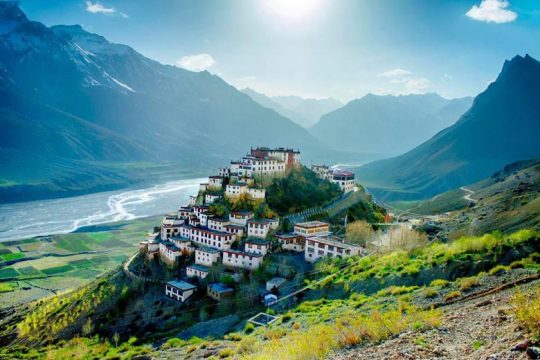
Zanskar Valley tour packages
Embark on an adventure with Zanskar Valley tour packages. Discover the breathtaking landscapes of this remote Himalayan region, characterized by dramatic mountains, ancient monasteries, and the frozen Zanskar River. Immerse yourself in the unique culture of the region while exploring the rugged beauty that makes Zanskar a captivating destination.
0 notes
Text
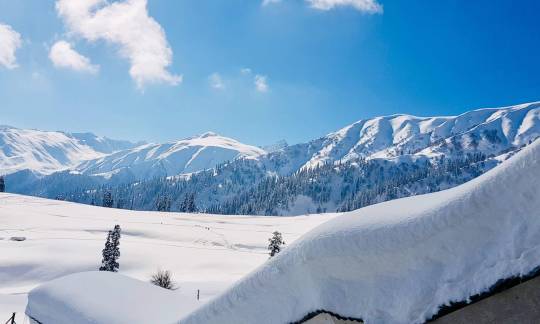
Gulmarg in January
Gulmarg in January transforms into a winter wonderland with pristine snowfall, creating a magical atmosphere. The world-class ski resorts come alive, offering thrilling adventures. The Gulmarg Gondola provides panoramic views, and the frozen landscapes make it a serene destination for those seeking the beauty of Kashmir's winter.
0 notes
Text
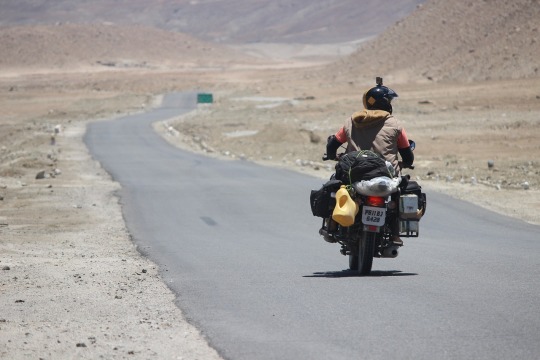
Leh Ladakh Bike Trip Packages
Embark on the ultimate Leh Ladakh bike trip adventure with our curated packages. Ride through breathtaking landscapes, conquer high mountain passes, and experience the unique Ladakhi culture. Our packages include well-maintained bikes, expert guides, and comfortable accommodations for an exhilarating and memorable journey through the Himalayas.
0 notes
Text
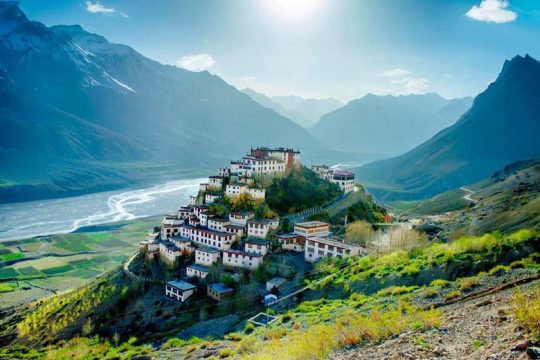
Zanskar Valley Tour Packages
Embark on an unforgettable journey to Zanskar Valley with our curated tour packages. Explore the rugged beauty of this remote Himalayan gem, witness the frozen Zanskar River, and discover ancient monasteries. Our packages ensure a seamless blend of adventure and cultural immersion, creating memories to last a lifetime.
0 notes
Text
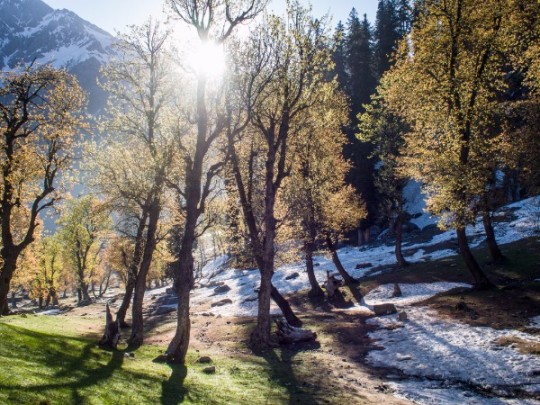
Kashmir in February
In February, Kashmir experiences cold temperatures and often receives snowfall, enhancing its picturesque winter landscape. The region's beauty is accentuated by snow-covered mountains, frozen lakes, and charming snow-clad villages. Despite the chilly weather, February offers a unique opportunity to witness the serene and tranquil side of Kashmir, creating a mesmerizing atmosphere for visitors.
0 notes
Text
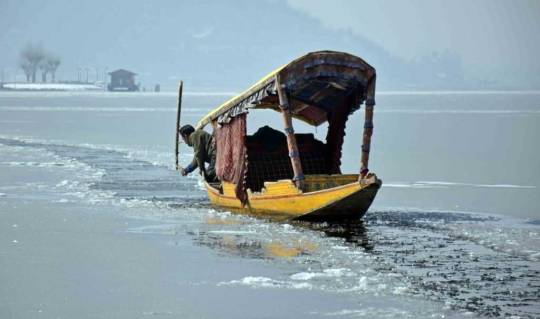
Kashmir in January
In January, Kashmir experiences harsh winter conditions with temperatures ranging from -2°C to 7°C. The region is covered in a blanket of snow, creating a mesmerizing winter landscape. The Dal Lake freezes, offering opportunities for ice sports. Local life adapts to the cold, with residents engaging in winter activities and tourists enjoying the serene beauty of snow-capped mountains and pristine surroundings.
0 notes
Text
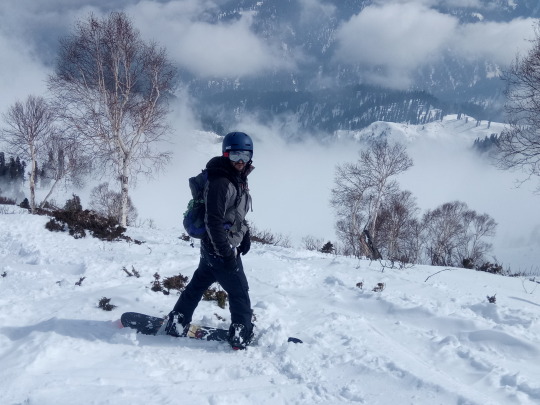
Gulmarg Snowboarding
Gulmarg, nestled in the pristine Himalayas, offers an unparalleled snowboarding experience. With its breathtaking landscapes and powdery slopes, it's a haven for snow enthusiasts. The renowned Gulmarg Gondola provides access to world-class terrain, catering to both beginners and seasoned riders. Majestic peaks surround the slopes, creating a surreal backdrop for an unforgettable snowboarding adventure in this idyllic Kashmiri paradise.
0 notes
Text
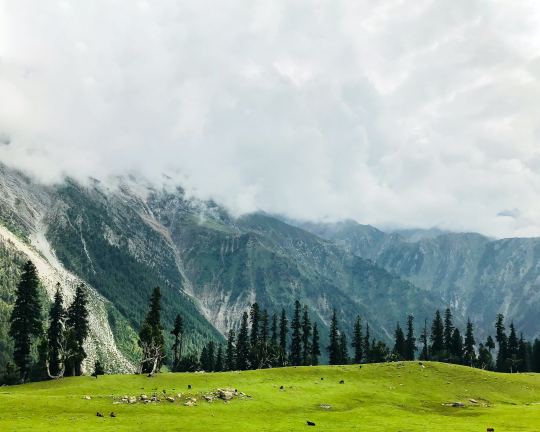
Sightseeing in Gulmarg
Gulmarg, nestled in the Pir Panjal range, offers breathtaking sightseeing experiences. The Gulmarg Gondola, one of the world's highest cable cars, provides panoramic views of snow-capped peaks. Apharwat Peak, at 4,390 meters, promises stunning vistas. The historic St. Mary's Church and the iconic Gulmarg Golf Course add cultural charm to this Himalayan gem.
0 notes
Text
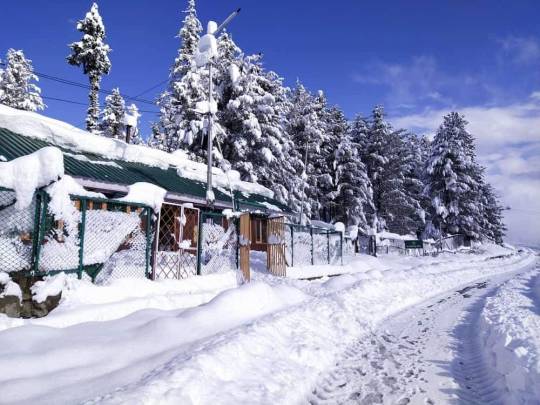
Kashmir in November
Kashmir in November, Kashmir experiences a transition to winter with cool temperatures and occasional snowfall in higher altitudes. The landscape transforms into a picturesque winter wonderland, attracting tourists seeking the serenity of snow-covered mountains and the charm of Dal Lake. The region's cultural richness and historical significance endure, offering a unique experience despite the chilly weather.
0 notes
